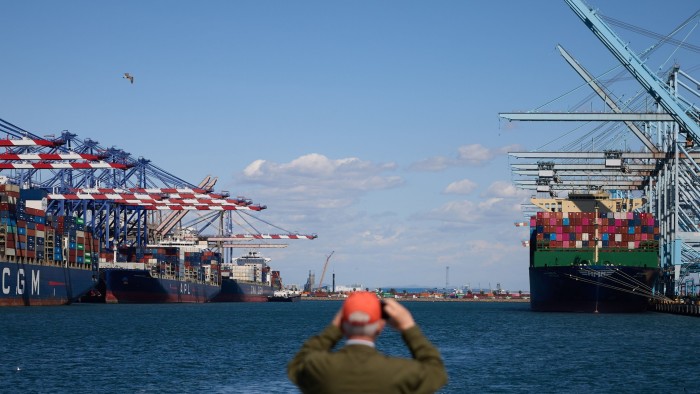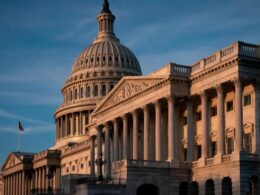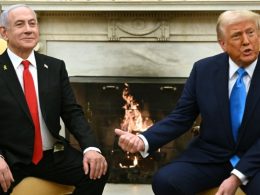Unlock the Editor’s Digest for free
Roula Khalaf, Editor of the FT, selects her favourite stories in this weekly newsletter.
Americans were told reciprocal tariffs would be simple.
“Reciprocal, that means they do it to us, and we do it to them,” said President Donald Trump on Wednesday. “Very simple, can’t get any simpler than that.”
Then the full list of countries’ tariffs came out, and it was . . . not simple. At least not in the “easily understood” meaning of the word.
The rates were supposedly based on the US Trade Representative’s calculations of “tariffs imposed against US products”. But they didn’t come from any obvious rates that were actually imposed, as Paul Krugman pointed out.
So how did they come up with these numbers in the first place? Turns out that there is some method to the madness! It’s just a nonsensical method, if it’s what we think.
Here’s what the White House and its crack team of trade investigators seems to have done: Take the US’s goods trade deficit with any particular country, and divide it by the total amount of goods imported from that country. Cut that percentage in half, and there’s the US’s “reciprocal” tariff rate.
We can confirm this fits* the numbers for the first 24 countries listed, which we checked by hand because we could hardly believe it and also because we refuse to use AI for anything. Kudos to @orthonormalist and James Surowiecki, who both put it together, more or less.
Let’s look at Bangladesh as an example. The US imported $8.4bn of goods from Bangladesh in 2024, giving it a $6.2bn trade deficit with the country. 6.2 divided by 8.4 is 0.738.
And what do you know? The White House says that the country has “charged” 74 per cent “tariffs” against the US, “including currency manipulation and trade barriers”.
Trying to assign a macro narrative to this calculation method is enough to make even a hack strategist’s blood run cold.
Is the US . . . implying that all trade deficits are the result of unfair practices or currency manipulation? What about comparative advantage? David Ricardo is surely spinning in his grave. What about bananas? They don’t grow in the US! This is bananas.
Anyway, we’ll see how long it lasts, we guess? There has been some debate about what legal authority the White House can claim to impose tariffs, and officials seem to have picked all of them that could apply in the latest Executive Order: The International Emergency Economic Powers Act; the National Emergencies Act; and sections 604 and 301 of the Trade Act of 1974.
But if trade wars are indeed class wars, this was a pretty noisy and chaotic shot across the bow.
*The only discrepancies we found in that group were Sri Lanka, which had 87 per cent instead of 88 per cent, and what could be some messy rounding. The next 24 countries were a little messier, but could still more or less be explained by sloppy rounding, with the exception of Jordan, Tunisia and Kazakhstan, which were all off by a percentage point or two.
Source link









